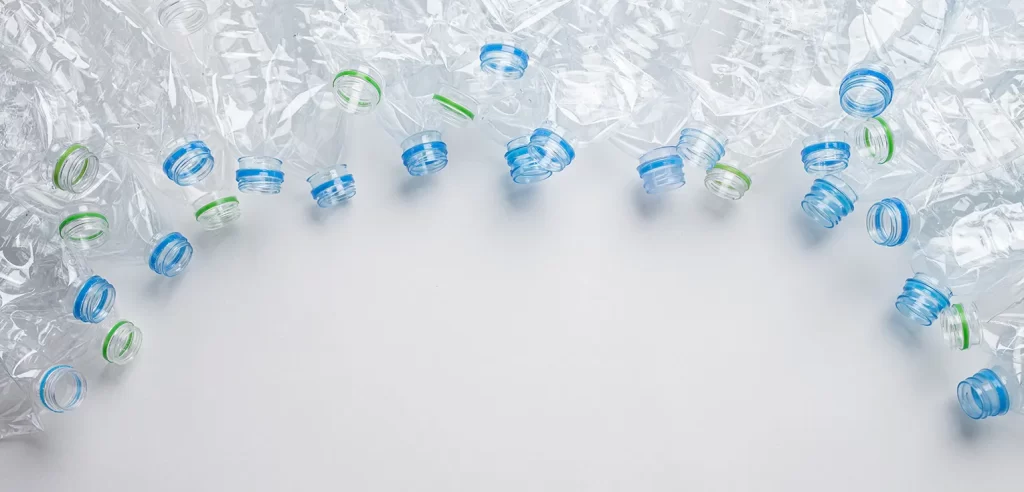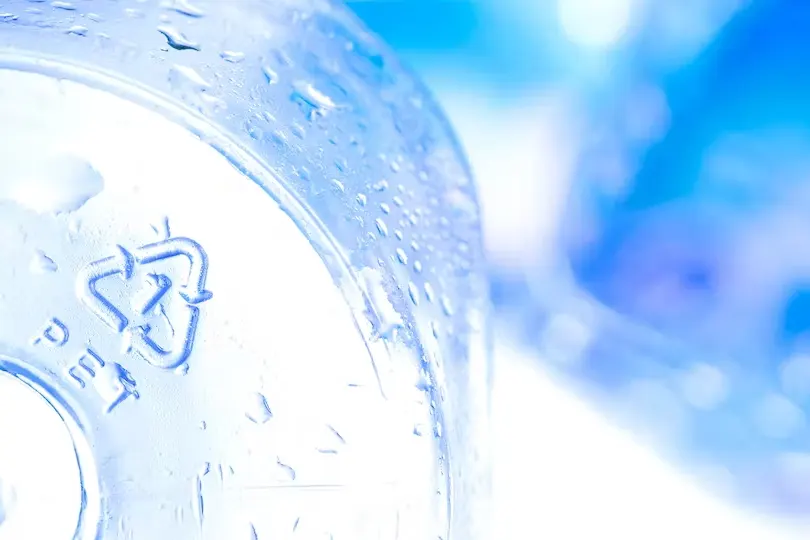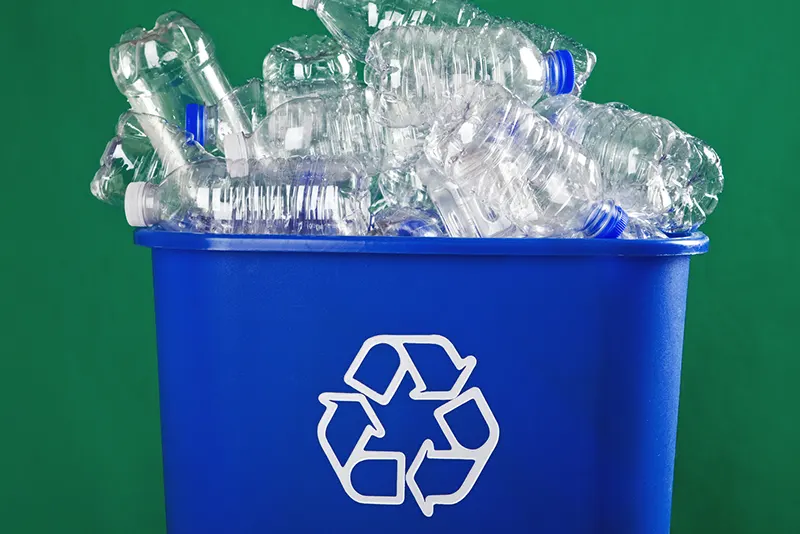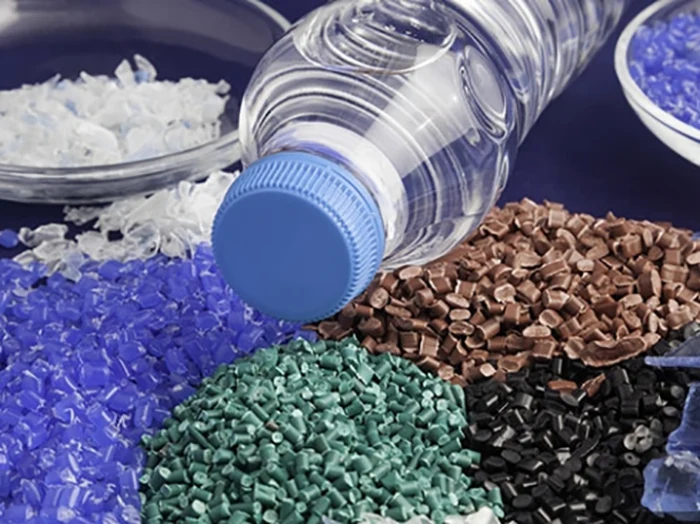What is PET ? Polyethylene terephthalate, often known as PET or PETE, is the chemical term for polyester.
PET, a transparent, robust, and lightweight plastic, is often used to package meals and drinks, particularly convenience-sized soft drinks, juices, and water. PET is primarily used to make the single-serving and 2-liter bottles of carbonated soft drinks and water that are marketed in the United States.
Salad dressings, peanut butter, culinary oils, toothpaste, shampoo, liquid hand soap, window cleaner, and even tennis balls are often packaged in this manner. Carry-home food containers and prepared meal trays that may be reheated in the oven or microwave are made out of special grades of PET.
more info : Recycled PET suppliers
Ethylene glycol and terephthalic acid are the fundamental constituents of PET, and they are mixed to create a polymer chain. PET is extruded from the resultant spaghetti-like strands, immediately cooled, and then chopped into tiny pellets. The resin pellets are then heated to a molten liquid state, which allows for simple extrusion or molding into objects of almost any form.
When DuPont researchers were looking for new synthetic fibers in the middle of the 1940s, they created PET for the first time in North America.

Later, DuPont gave their PET fiber the “Dacron” name. Today, PET, which is known as “polyester” when used for fiber or fabric applications, makes up more than half of the synthetic fiber used in the world. It is known as PET or PET resin when used for containers and other uses.
Researchers developed PET film in the late 1950s by stretching a thin PET extruded sheet in two directions. PET film is now widely used for packaging, video, and picture films. The technique for blow-stretch molding PET into bottles was created in the early 1970s. In 1973, the PET bottle received a patent.
Why Using PET?
PET is widely acknowledged as a secure, recyclable material for packaging both food and non-food items. Because PET packaging is secure, powerful, shatterproof, and chemically 100% recyclable into more PET goods, it is used for a broad range of applications (fibre and bottles).
PET is used by manufacturers to package goods because to its durability, thermostability, and transparency.

Additionally, it is lightweight, which lowers transportation expenses and carbon emissions. Retailers choose PET because it encourages great product visibility, is lightweight and easy to stack on shelves, and is shatterproof, ensuring safety, maintaining the integrity of the product, and reducing breakages.
Because PET is 100% safe, 100% recyclable, portable, light, and can be resealed for effective on-the-go hydration, consumers prefer it.
The most crucial environmental considerations are two things:
- PET is the packaging material that has been recycled the most.
- Over the previous ten years, PET packaging has lost more than 30% of its weight.
Why we choose recyclable plastic packaging over biodegradable plastic is a question we are often asked. The answer is straightforward: in our opinion, it makes more sense from an economic and environmental standpoint to collect the energy and raw material contained in a plastic bottle and utilize it again rather than lose it as it degrades.
PET Safety Approval
Since concerns about the safety of a different kind of plastic, namely the polycarbonate goods containing bisphenol A (BPA), which are often used to produce reusable hard containers and electronic gadgets, were raised, there has been significant uncertainty over the safety of PET. PET plastic and BPA don’t interact at all.
BPA is not a component of any of the ingredients used to make PET, nor is it employed as a chemical building block for any of those components.
Three subgroups of the chemical class known as phthalates, pronounced “tha-lates,” exist, each having unique features. One of these phthalate subgroups, while not the one that is most often connected with the word, includes polyethylene terephthalate.

Orth phthalate is the phthalate subgroup that is most often mentioned and debated in popular literature and online forums, and it has received some unfavorable attention. This kind of phthalate is also known as a plasticiser and is often used to make different polymers more flexible.
PET doesn’t include orthophthalates or plasticizers. Terephthalates are utilized in the production of PET; however, plasticizers are never used in place of them or combined with them.
According to recent studies, neither PET nor other endocrine disruptors like BPA contain or leach oestrogen-like compounds.
more info : what is Recycled PET ?
The FDA and other health safety organizations across the globe have certified PET as safe for contact with foods and drinks. Through in-depth research, regulatory approvals, testing, and its widespread use for more than 30 years, PET’s safety for food, beverage, pharmaceutical, and medical applications has been consistently proven. PET doesn’t include phthalates or bisphenol-A (BPA) (plasticizers).
PET is quickly replacing paper as the world’s favorite packaging material for foods and drinks because of its special qualities. Similar to glass, it is an extremely durable and inert substance that won’t react with food, won’t be attacked by microorganisms, and won’t biologically deteriorate. PET, however, is lighter, more transportable, and shatterproof than glass.
PET is Completely Recyclable and Sustainable
PET is the most recycled plastic in the world and is 100% recyclable. Every year, the United States recovers more than 1.5 billion pounds of discarded PET bottles and containers for recycling. The triangular “chasing arrows” code’s #1, which is often molded into the bottom or side of the container, makes it simple to recognize PET. There are no other plastics with the #1 code.
PET may be chemically broken down to its component components to create fresh PET resin, or it can be thoroughly washed and remelted. PET containers are accepted by almost all municipal recycling programs in North America and Europe.
New PET bottles and jars, carpet, apparel, industrial strapping, rope, automotive components, fiberfill for winter coats and sleeping bags, building materials, and protective packaging are all products that are often created from recycled PET.

PET recycling is now just 31% in the United States. Although this number is increasing, it is still far behind Europe, where the percentage of PET recycling is 52%.
PET bottles and containers that end up in landfills represent little danger of injury or leaching, despite recycling being the most economical and ecologically friendly method to reuse resources. The polymer won’t biologically deteriorate since it is immune to microorganism assault and inert.
PET can be readily flattened and takes up very little room in landfills. Only 1% of municipal solid trash in the US is attributable to PET containers, according to the EPA.
PET is a packaging material that uses extremely little energy. In contrast to glass, aluminum, and other container materials, it has a highly positive sustainability profile even if its base components are generated from crude oil and natural gas.
Recycling increases its sustainability even further since 40% of the energy consumed by PET is attributed to its “resource energy”—the energy that is essentially locked in its raw materials and that can be recovered and utilized again via recycling.
more info : What is Polypropylene (PP)
An important factor in PET’s energy efficiency is its high strength in relation to its light weight, which enables more product to be supplied in less packaging and uses less fuel for transportation. The technology for light-weighting is always improving, thus increasing its energy efficiency. The advantages of PET as a packaging material for the environment have repeatedly been supported by life cycle research.
Since PET was initially created 60 years ago, it has grown to be one of the most popular, adaptable, and reliable materials in use today.

